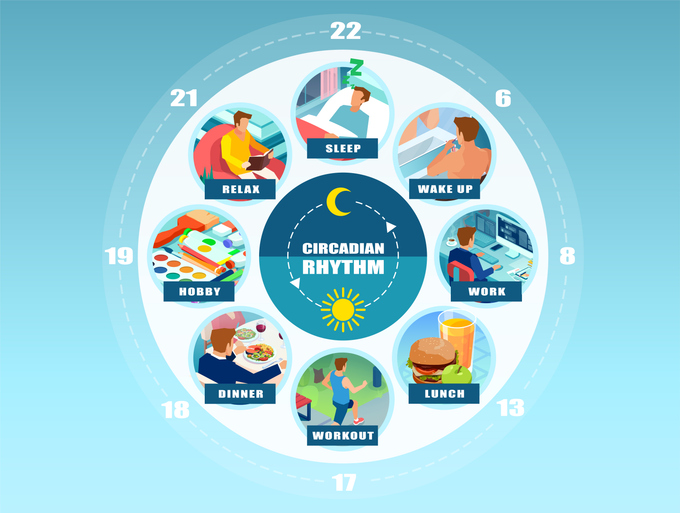In a world first, a new wearable device developed by Monash University researchers will help to record the impact of artificial light on our bodies for sound sleep, improved mental wellbeing and treating chronic health conditions.
The ‘MiEye’ sensor is the brainchild of circadian biology experts Professor Sean Cain (Adjunct) and Associate Professor Andrew Phillips (Adjunct) from the Faculty of Medicine, Nursing and Health Sciences.
Professor Jon McCormack, Elliott Wilson and Dr Rowan Page from SensiLab – a joint lab between the Faculty of Information Technology and the Faculty of Art, Design and Architecture – worked on making the MiEye device wearable and adapted it for commercial production.
When worn, the device, which senses light over 11 channels and is about as big as a 20-cent piece, records the impact of any light source, such as fluorescent light, overhead LED, sunsets, phone light and device light on the wearer. It then sends feedback to a smartphone application, which calculates the impact of ambient light on our body clock.
Research lead Professor Sean Cain said our light behaviour is fundamental to all aspects of our health.
“By providing feedback on light environments, we are trying to make people more conscious of their exposure to different types of light and guide them towards healthier light exposure patterns,” Professor Cain said.
“By helping to manage circadian rhythms, MiEye will be a powerful clinical tool that can aid in the treatment of type 2 diabetes, mental health issues, cardiovascular disease and hypertension, and generally improve health and longevity.”
The MiEye sensor has been developed for public use by Circadian Health Innovations – a spin-off company founded by the lead researchers of the project.
Circadian Health Innovations Co-Founder and Chief Technology Officer Associate Professor Andrew Phillips said the device is currently available to select researchers and will be more widely available to clinicians and researchers in 2025.
“Ultimately we aim to have the device available to the public where people can use it to get real-time feedback and understand as well as manage their exposure to different types of light. This can be especially useful for travellers suffering from jet lag and shift workers,” Associate Professor Phillips said.
In its development stage, the MiEye sensor won a prestigious Australian Good Design award in 2022 under the ‘Design Research’ category.
“For it to be a feasible wearable device, we designed MiEye to be as compact and light as possible while still incorporating the required sensors from the technological point of view,” SensiLab Engineer, Elliott Wilson said.
Research for the MiEye project was funded by the Monash Institute of Medical Engineering and commercialisation was made possible through Monash Innovation.
“This new device is a shining example of synergy between quality research and enterprise to produce tangible health outcomes and positively impact communities,” Monash Innovation Chief Commercialisation Officer Dr Alastair Hick said.
MiEye Project Lead and Monash University Adjunct (currently at Flinders University) Professor Sean Cain and Professor Jon McCormack from the Faculty of Information Technology are available for interviews.
To learn more about MiEye and submit expressions of interest for the device, please visit: https://www.circadianhealth.com.au/mieye







